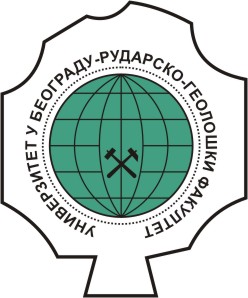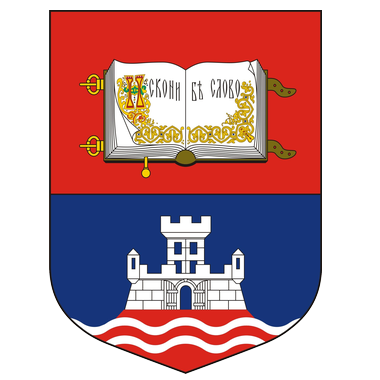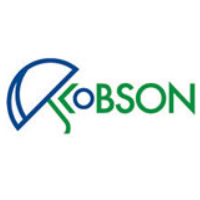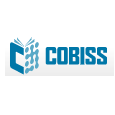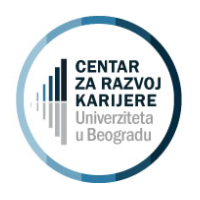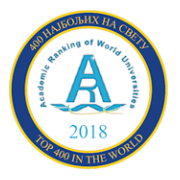Study program:
Mineral Processing (IX semester -MsC) |
|
Name of subject: Testing Methods for Mineral Resources 2 |
Instructors:
Prof. Predrag Lazić, Prof. Aleksandar Pačevski |
|
Status: Optional |
|
ECTS: 6 |
|
Prerequisites: The student should, before enrolling on this course, observe the following: Methods of testing mineral resources, Microscopic methods in mineral processing. |
Course Objectives:
One of the first goals is that the student be able to: recognize and describe the basic types of ores - raw materials and types of waste - secondary raw materials, waste of exploitation, processing, separation, concentration, use, etc., to examine and analyze reactions and processes which are inevitable in technological treatment, as well as those that engulf the environment and may be caused by mining activity. The aim of the course is to introduce students to the physical, chemical, biological, technological characteristics of mineral raw materials and waste materials. To be able to see the possibilities of technological treatment and use. |
Learning Outcomes:
Upon completion of this course, the student is able to perform the characterization of each geogenic and technical raw material, to determine the possible directions of treatment (enrichment, use), and to know which effects can be achieved. |
Content:
Theory teaching
One of the first and most basic steps in the technological treatment of geogenic and technogenic raw materials is the characterization of materials and the estimation of the possibility of obtaining suitable useful components by different methods. Physical properties of minerals. Characteristics of geogenic or technogenic mineral raw materials - refineries of mining, processing, extractive and hydrometal waste, smelting and industrial waste, in general. Formation of the primary sample from the deposit or in the preparation plant; determination of sample representativeness and processing. The curriculum of this course envisages the use of a number of methods of testing mineral resources, such as mineralogical minerocroscopic tests, structural-texture analysis of ores, minerals release tests; determination of granulometric composition. Possibilities of fractionation of raw materials based on differences in density, electrical conductivity, magnetic properties, etc. Methods for determining the degree of release of minerals. Possibilities of release of minerals in the process of grinding of raw materials depending on the structure, composition, association, methods of aging, physical properties of minerals, oxidation, etc. Practical teaching
Qualitative-quantitative mineral composition. Study of the elemental composition of minerals and mineral - geogenic or technogenic raw materials. Chemical and physico-chemical methods. Importance of Mineralogical Analysis in the Preparation of Mineral Raw Materials. Identification and characterization of minerals by stereo binocular microscope (physical properties of minerals), ore polarization microscope (optical minerals), image analyzer. Production of ore and special briquetted microscopic preparations. Rational analysis. Modal mineral analysis. Prognosis, scientific research and control mineralogical testing of products Preparation of mineral raw materials. Investigation of the shape and intensity of alterations in technical raw materials. Opening of the raw material and the level of release of minerals in the process of crushing. Defining the degree of liberation of minerals, the method of measurement, showing the results. Modeling of raw materials and models of crushing. Integral Release Rate (ISO). ISO in the function of finishing grinding raw materials. The relevance of the liberation of minerals on the selectivity of the separation of minerals. Quantitative analysis in ore microscopy. Measurement techniques: De Lesse method (planimetric), Rosiwal-Shand method (linear), Glagolev-Case method (points); Flit’s method, Van der Plas’s method of tape, Galehous line method, accuracy of analysis of raw materials and products Preparation of mineral raw materials with the help of ore microscope. Minerals release: raw material models, models of liberation; approaches; recording techniques, displaying results. An integral degree of liberation. Importance. |
Suggested Reading List:
- Tomanec R., 2000: Metode ispitivanja mineralnih sirovina u PMS. – Izdanje: RGF, Beograd. CD.
- Tomanec R., 2002: Zbirka rešenih zadataka iz MIMS u PMS. – RGF, Beograd.
- Tomanec R., Vakanjac B., 2001: Rudne parageneze, koautorska skripta. RGF, Beograd.
- Romanov V. A., Morozov M. V., 1999: Laboratory methods of investigation of minerals, rocks and ores. Methodical guidelines for laboratory works. Saint-Petersburg.
|
Conduct of the Course:
Students in the laboratories of the Department of Mineral Processing preparation conduct practical exercises on real materials (different mineral raw materials, waste, concentrates, products of cleaning and use of coal, etc.), determine their characteristics and determine the possibilities of their future successful concentration or certain processing. Observe - recording, structural texture characteristics, the possibility of successfully opening raw materials and releasing useful minerals. They predict the behavior of the raw material and predict the quality of the concentrate, ie explain possible losses. |
Fund hours:
| Lectures |
Exercises |
Other forms of teaching |
Study research |
| 2 |
2 |
0 |
0 |
|
Assessment:
| Final Exam |
ECTS |
| Written exam | 35 |
| Classwork Assessment |
ECTS |
| Class Participationа | 10 | | Practical Classes | 40 | | Written tests | 15 |
|
|
Additional Assessment Criteria: - |
|
|
